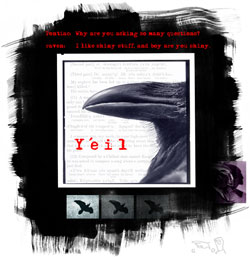|
This landmark exhibition brings together 26 Indigenous photographers from throughout the US , Canada , Peru and New Zealand to explore the dynamic field of Indigenous photography. All of the exhibiting artists met together at UC Davis in early April, where they discussed pertinent issues in creating their artwork and shared their experiences with each other in group sessions, as well as with the general public in formal artist panels. The result is this important exhibition, featuring two works by each artist that demonstrate the longevity of Native peoples practicing photography. The earliest pieces in the exhibition are those of Cherokee photographer, Jennie Ross Cobb from 1902 in Talequah , Oklahoma . She is the earliest-known female Native American photographer, and her works raise critical distinctions between those photographing their own communities from the inside, with familiarity and respect; and other non-Natives photographing at this time on behalf of the government, expansionism, or academic research. At the same time, Benjamin A. Haldane, a Tsimshian techie of his time, opened a professional portraiture studio in the remote community of Metlakatla , Alaska . At a time when studio portraiture was most-popular, BA Haldane (as he is familiarly known) contributed widely to his community through a range of activities, but most importantly by photographically documenting his clients and communities in the way in which they wished to be imaged. Their work continues to inspire and influence the prominent artists working today. Seventeen professional artists have contributed to form this exhibition. Their artworks reflect the diversity of technologies, subject matter, vision, and style but resonate together by the ties to their own communities. Like those photographers before them, they demonstrate the ownership and authority to image from within. The field shows much promise through the teachings and influence of professional artists for the next generation of artists. The exhibition also features works by four Indigenous MFA students, and two younger students of photography. Their work reassures the continuance of this art form within Indigenous communities, and continues to challenge the field that, historically, has been so destructive and aggressive in colonial history. |
 Yéil Larry McNeil Tlingit |

